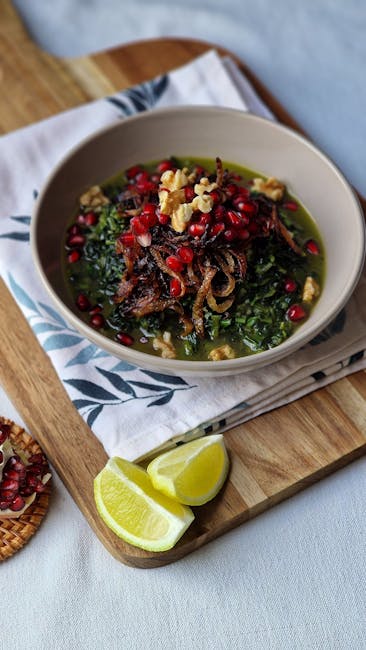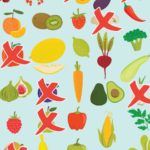Recipes Nasıl Okunur? (How to Read Recipes) – A Comprehensive Guide
Understanding a recipe is more than just following a list of ingredients and instructions. It’s about grasping the underlying principles of cooking and baking, ensuring you create a delicious and successful dish every time. This guide delves into the nuances of recipe reading, empowering you to confidently tackle any culinary challenge.
1. Deciphering the Recipe Title and Description:
Before diving into the ingredients, pay close attention to the recipe title and any accompanying description. The title often provides a clear indication of the dish’s type (e.g., “Chocolate Chip Cookies,” “Chicken Tikka Masala”). The description might offer valuable context, highlighting the dish’s origin, style, or level of difficulty. Look for keywords like “easy,” “quick,” “advanced,” or “authentic” to gauge the recipe’s complexity and time commitment.
2. Mastering the Ingredient List:
The ingredient list is the recipe’s blueprint. Pay close attention to:
- Quantities: Precise measurements are crucial for baking, less so for cooking. Understand the difference between weight (grams, ounces) and volume (cups, tablespoons, teaspoons). Invest in a kitchen scale for accurate baking results.
- Units of Measurement: Familiarize yourself with common culinary units. Know that a “cup” can vary depending on the type of cup (liquid measuring cup vs. dry measuring cup). Use standardized measuring tools for consistency.
- Ingredient Specificity: Note specific types of ingredients. “All-purpose flour” differs from “bread flour” or “cake flour.” Similarly, “unsalted butter” requires different salt adjustments compared to “salted butter.” “Granulated sugar” differs from “brown sugar” or “powdered sugar.” Understanding these distinctions is key to successful cooking.
- Ingredient States: Pay attention to the state of the ingredients, such as “chopped,” “diced,” “minced,” “sliced,” “grated,” “shredded,” or “whisked.” These terms dictate the preparation before incorporating the ingredients into the recipe.
- Optional Ingredients: Recipes often include optional ingredients. These add flavor or texture but aren’t essential to the dish’s success. Feel free to experiment with them, but understand their impact on the final product.
3. Understanding the Instructions:
The instructions are the step-by-step guide to creating the dish. Read them carefully before you begin, visualizing the process. Look for:
- Sequencing: Instructions are typically presented in a logical order. Follow them meticulously to achieve the desired outcome. Skipping steps or altering the order can significantly impact the final product.
- Verbs and Actions: Understand the verbs used. “Whisk” requires a different technique than “fold” or “stir.” Learn the basic culinary techniques to execute the instructions accurately. “Sauté” means to cook in a small amount of fat over medium-high heat, while “simmer” involves gentle, bubbling cooking.
- Temperature and Time: Pay close attention to specified temperatures (Celsius or Fahrenheit) and cooking times. Use a reliable thermometer to monitor temperatures accurately, especially for baking.
- Visual Cues: Some recipes include visual cues, like “until golden brown” or “until tender.” Develop your culinary senses to recognize these visual indicators.
- Resting Times: Many recipes require resting periods, allowing flavors to meld or ingredients to set. Don’t skip these steps; they are crucial for achieving the desired texture and taste.
4. Mastering Culinary Techniques:
Reading a recipe effectively requires understanding basic culinary techniques. Familiarize yourself with terms like:
- Mise en Place: This French term means “everything in its place.” Prepare all your ingredients – chopping vegetables, measuring spices – before you begin cooking. This streamlines the cooking process and minimizes stress.
- Zesting: Removing the outer layer of citrus fruits for flavor.
- Julienne: Cutting vegetables into long, thin strips.
- Dicing: Cutting ingredients into small, uniform cubes.
- Mince: Finely chopping herbs or garlic.
- Whisk: Incorporating air into ingredients using a rapid, back-and-forth motion.
- Fold: Gently incorporating one ingredient into another using a spatula, preserving air bubbles.
- Stir: Mixing ingredients using a spoon or spatula.
- Knead: Working dough to develop gluten.
- Brown: Cooking food until it develops a golden-brown crust.
5. Adapting Recipes to Your Needs:
Recipes are guidelines, not strict rules. Feel free to adapt them to your preferences and dietary needs:
- Substitutions: You can often substitute ingredients, but be mindful of the impact on the final product. For example, substituting whole wheat flour for all-purpose flour will alter the texture of baked goods.
- Scaling Recipes: If you need to make a larger or smaller batch, adjust the ingredient quantities proportionally. However, be aware that scaling down recipes might not always yield the same results as the original.
- Dietary Restrictions: Adapt recipes to accommodate dietary restrictions like vegetarianism, veganism, or allergies by substituting ingredients accordingly.
6. Using Online Recipe Resources Effectively:
Online recipe resources offer vast culinary inspiration. When using these resources, be mindful of:
- Source Credibility: Look for recipes from reputable sources, such as well-known chefs, food blogs with high-quality content, or established culinary websites.
- Recipe Ratings and Reviews: Check out the ratings and reviews of a recipe before trying it. This can give you an idea of its success rate and potential challenges.
- Photo Verification: Photos can offer valuable insights into the dish’s appearance and overall quality. Look for recipes with clear and appetizing photos.
7. Keeping a Recipe Journal:
Start a recipe journal to document your cooking adventures. Note any modifications you made, your observations, and the overall success of the recipe. This will help you refine your cooking skills and create your personal culinary library.
8. Practice Makes Perfect:
The key to becoming a confident cook is practice. Don’t be afraid to experiment and learn from your mistakes. The more recipes you try, the better you’ll become at reading and interpreting them. Each culinary experience contributes to your growing understanding of cooking and baking.





